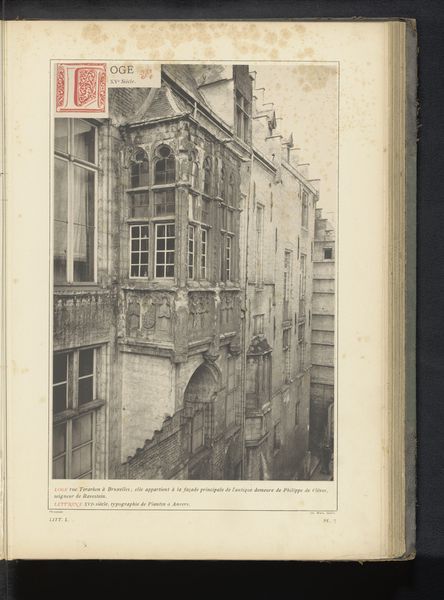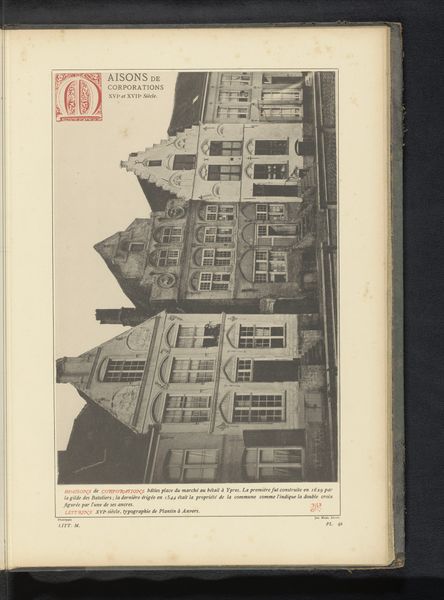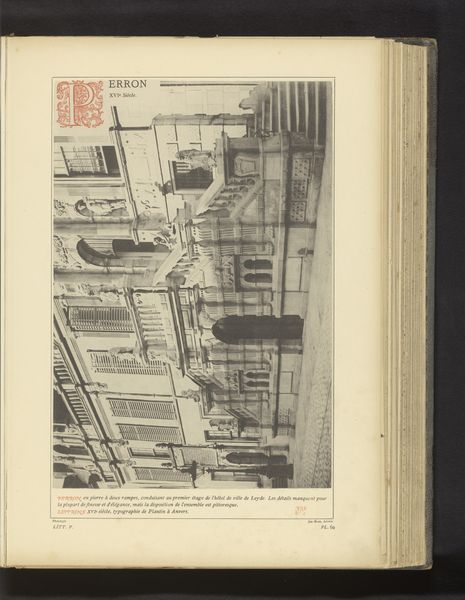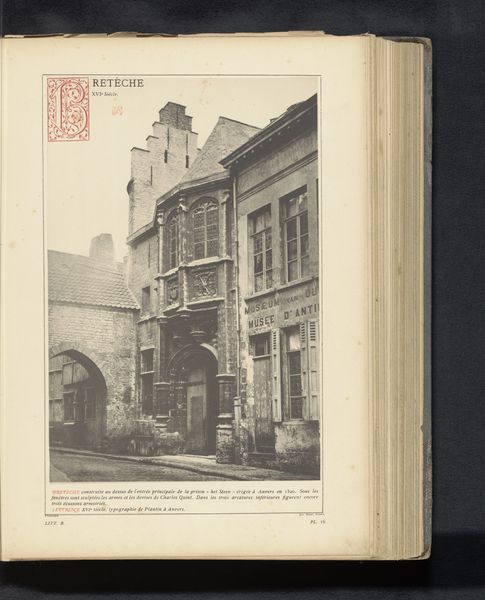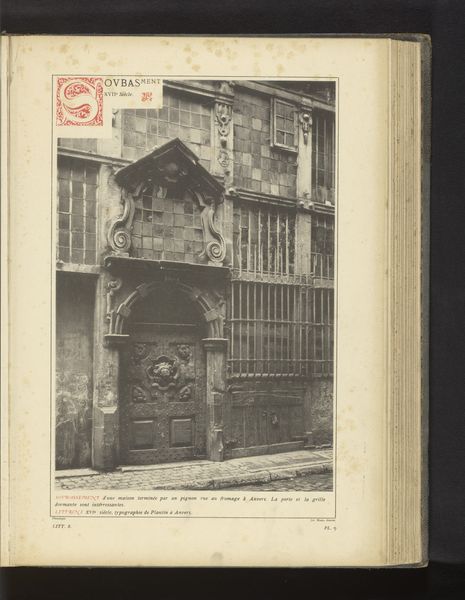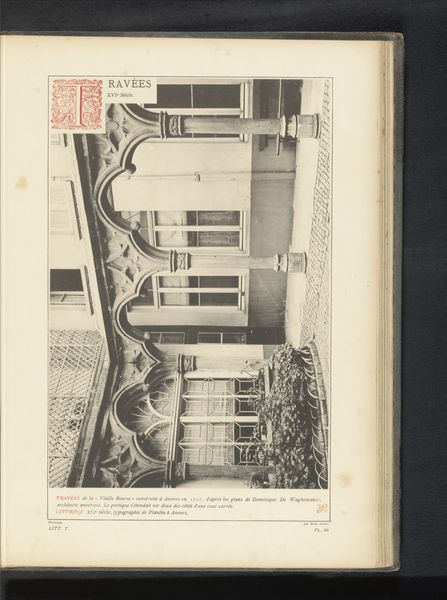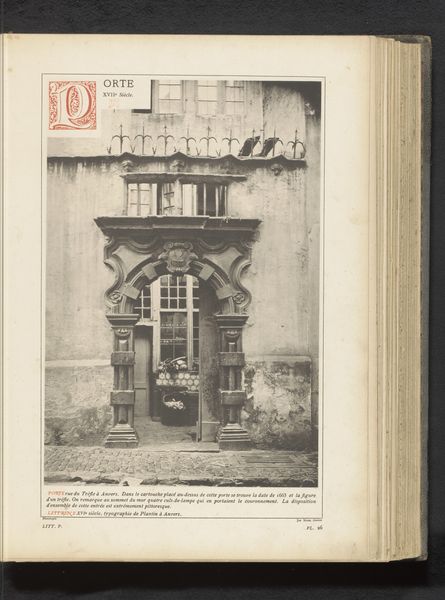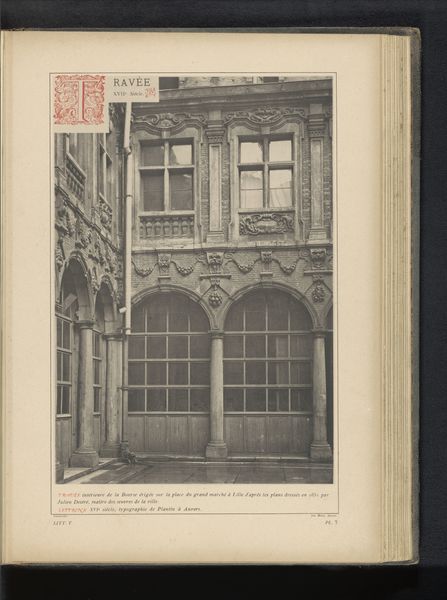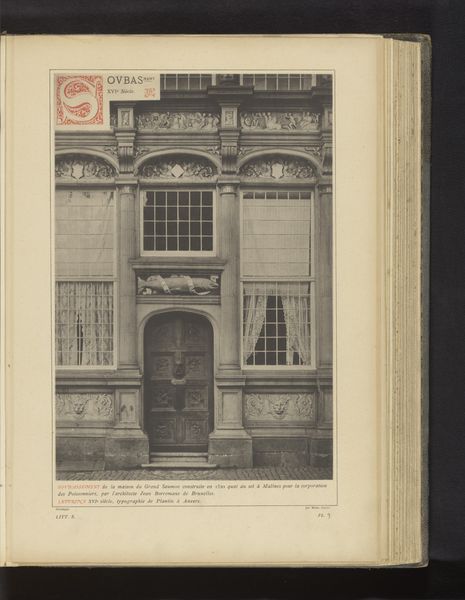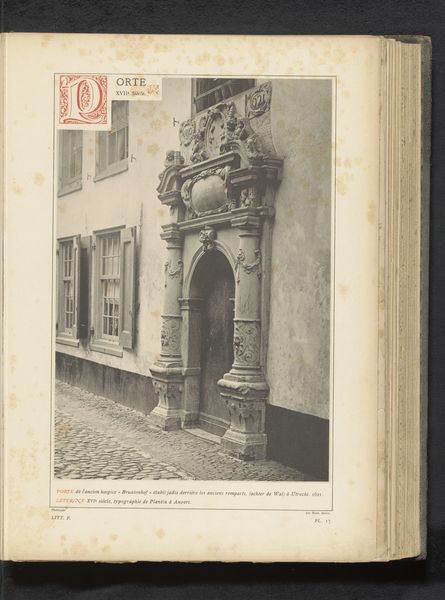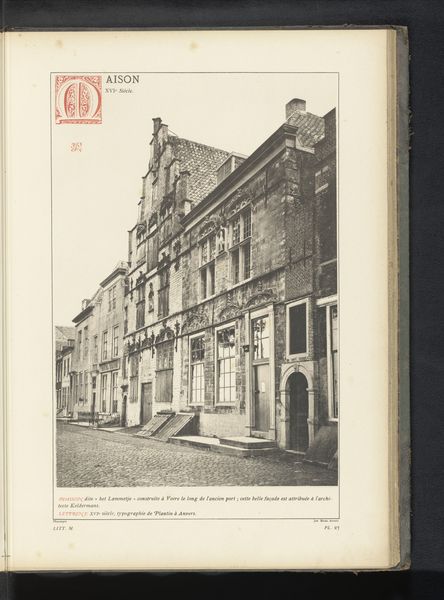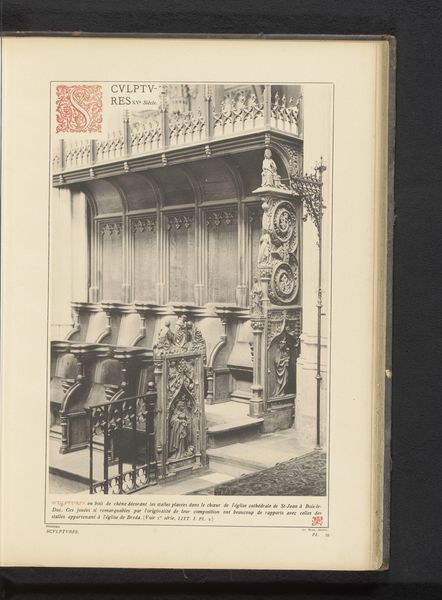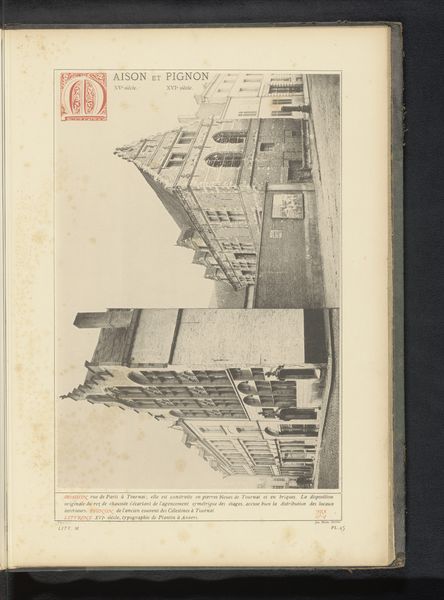
Gezicht op een uitbouw aan een huis aan de Rue Flamande in Brugge, België before 1880
0:00
0:00
print, photography
# print
#
landscape
#
photography
#
cityscape
Dimensions: height 335 mm, width 230 mm
Copyright: Rijks Museum: Open Domain
This anonymous photograph captures a building on the Rue Flamande in Bruges, Belgium. Though undated, its inclusion in a book suggests that it may have been made in the late 19th or early 20th century. The building’s prominent feature is its oriel window, a projecting bay that doesn’t reach the ground. This architectural element offered residents more light and space, but also served as a status symbol. Bruges, during this period, sought to preserve its medieval past amidst the pressures of industrialization. Photography became a tool for cataloging and celebrating historical architecture, imbuing buildings with a sense of national pride and cultural continuity. Historians can use photographs like this, along with city archives, maps, and census records, to reconstruct the social fabric of Bruges. They can reveal the values and priorities of a society grappling with modernity while trying to maintain its unique identity.
Comments
No comments
Be the first to comment and join the conversation on the ultimate creative platform.
